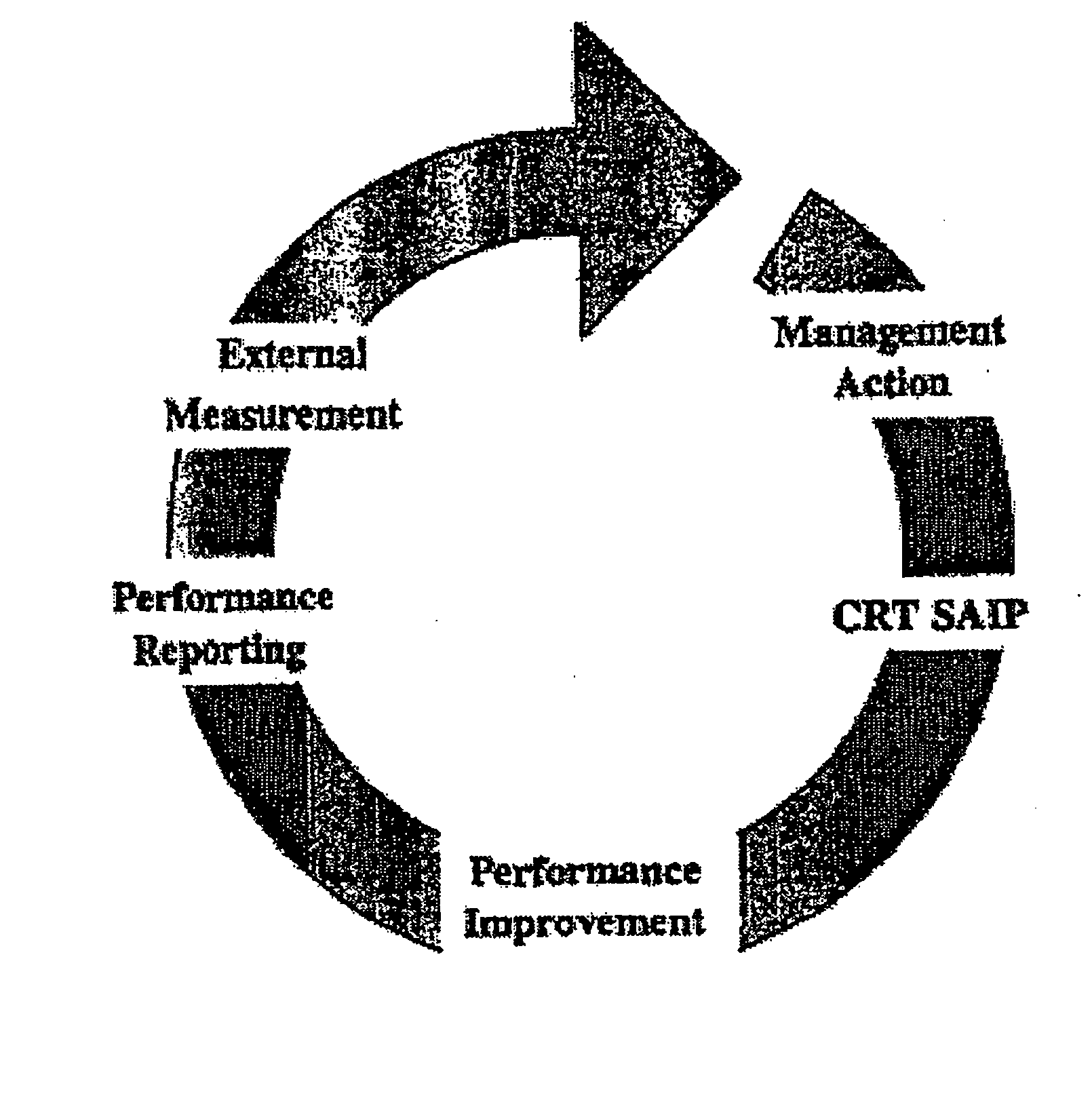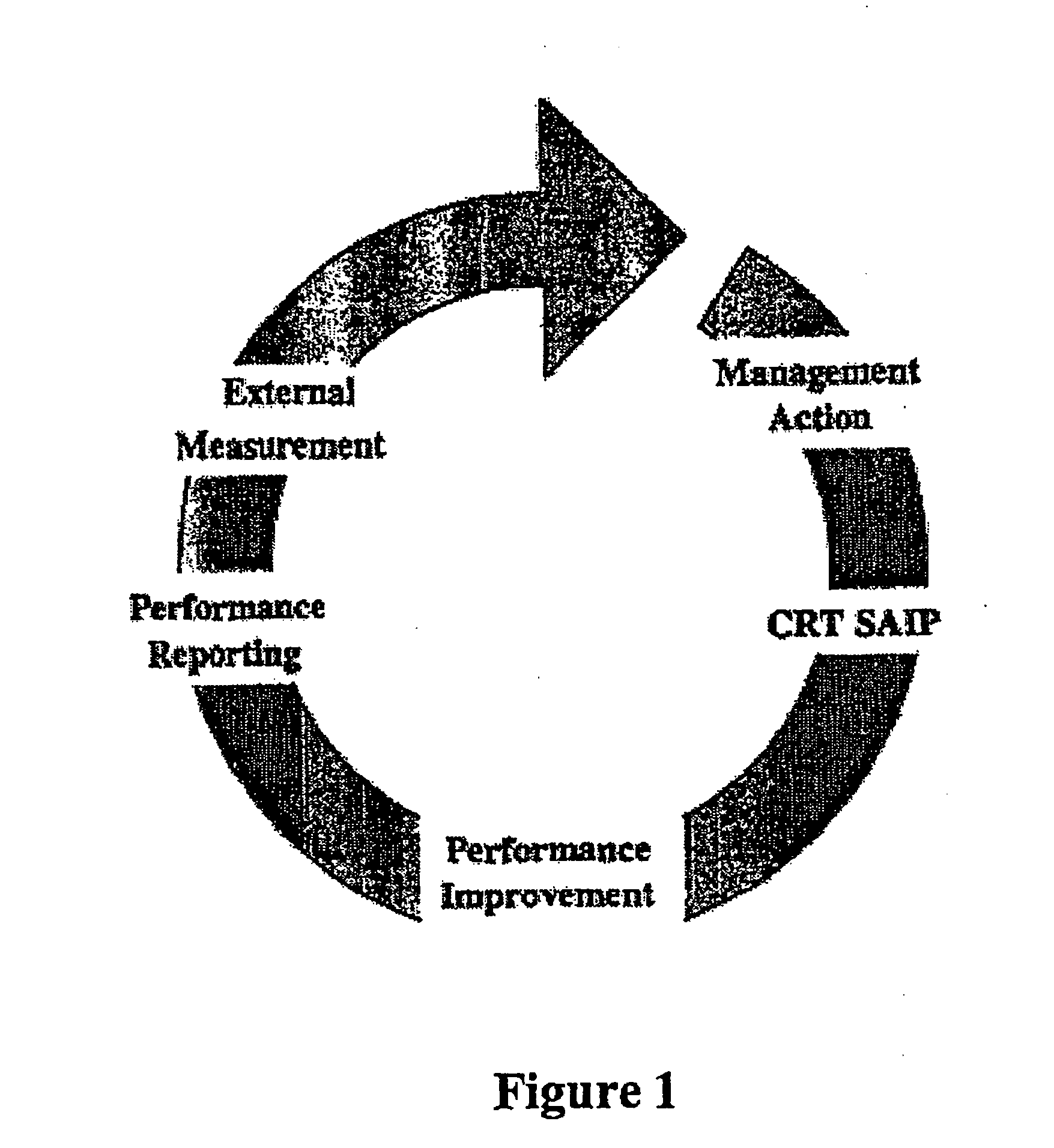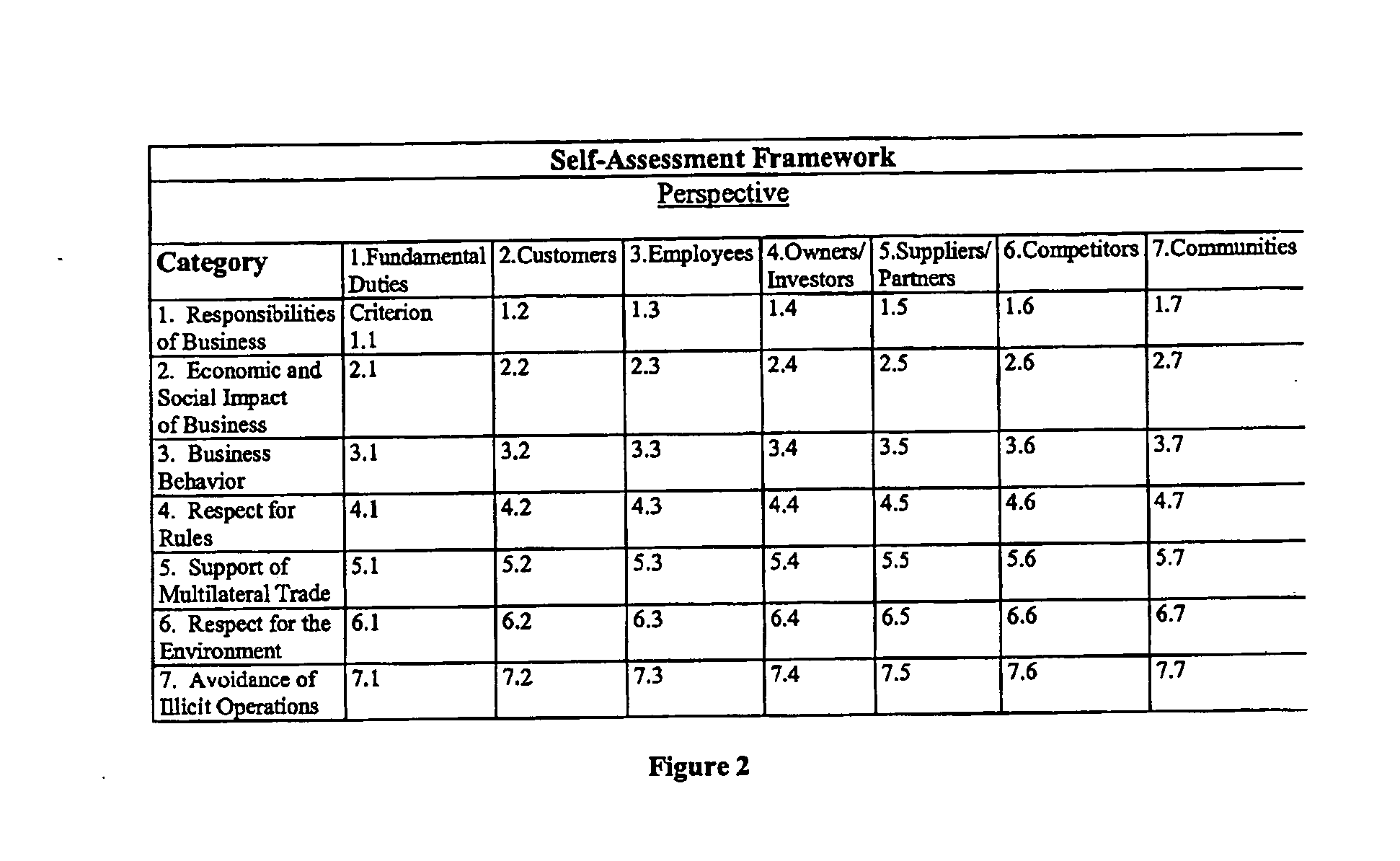System for assessing and improving social responsibility of a business
a social responsibility and business technology, applied in the field of systems for assessing and improving social responsibility of businesses, to achieve the effect of stimulating organizational improvement and improving corporate social performan
- Summary
- Abstract
- Description
- Claims
- Application Information
AI Technical Summary
Benefits of technology
Problems solved by technology
Method used
Image
Examples
Embodiment Construction
[0075] The flow chart of FIG. 1 is an illustrative embodiment of steps according to the Self-Assessment and Improvement Process for assessing business responsibility. The flow chart of FIG. 2 further diagrams the scoring system. The criteria for the Process are designated according to principles of social responsibility of businesses, and the fundamental duties of business and in regard to stakeholders. An embodiment of the Process incorporates the seven principles enumerated above for the first step of the scoring system flow chart of FIG. 2. The embodiment incorporates the fundamental duties and stakeholder groups set forth above for the second step of the scoring process flow chart of FIG. 2. FIG. 3 is an example of a scoring matrix ready for completion. The matrices can preferably be computerized so that scoring results are instantaneously available and readily transferable.
[0076] In the scoring system of FIG. 2, the sponsor can provide the first four steps to the self-assessin...
PUM
 Login to View More
Login to View More Abstract
Description
Claims
Application Information
 Login to View More
Login to View More - R&D
- Intellectual Property
- Life Sciences
- Materials
- Tech Scout
- Unparalleled Data Quality
- Higher Quality Content
- 60% Fewer Hallucinations
Browse by: Latest US Patents, China's latest patents, Technical Efficacy Thesaurus, Application Domain, Technology Topic, Popular Technical Reports.
© 2025 PatSnap. All rights reserved.Legal|Privacy policy|Modern Slavery Act Transparency Statement|Sitemap|About US| Contact US: help@patsnap.com



